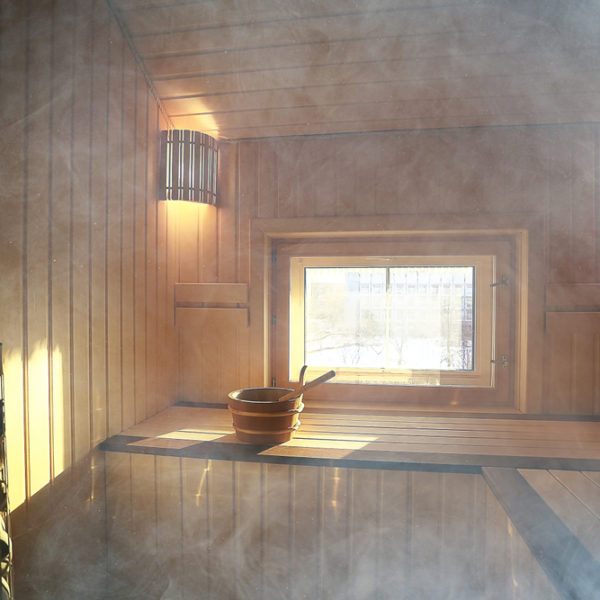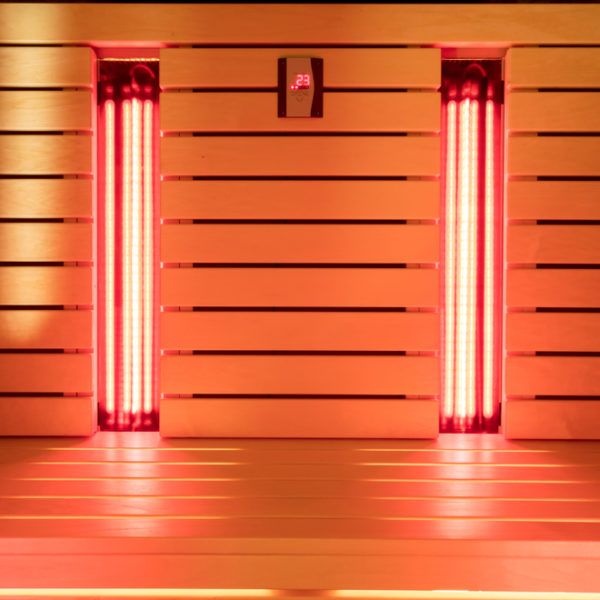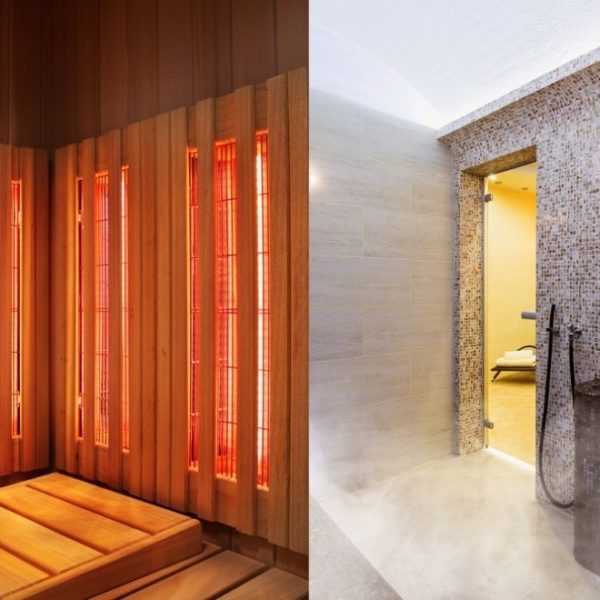Sitting in a sauna and sweating out all the stresses and troubles of the daily grind is one of life’s great pleasures – and having a private sauna at home is the stuff of dreams. Except nowadays, increasing numbers of people are realizing it’s the kind of dream that’s not beyond reach.
If you’re also considering installing a sauna in your home, there are quite a few variables to consider, but the type of wood is among the most important. So here we list 7 types of wood for saunas to help you understand the advantages and disadvantages of each type.
Traditional vs infrared saunas
Several factors can affect your choice of wood, and one of the most basic is which type of sauna you plan to install. For example, if you want a traditional Finnish-style sauna, you will have different requirements to if you want an infrared sauna.
If you prefer a steam sauna, otherwise known as a steam room, your requirements will be different again – and in that case, you’d probably be better off looking at materials like ceramic or glass since wood is not a suitable material for this kind of sauna.
Of course, you can skip all these considerations – and save yourself a whole lot of cash – by simply investing in a sauna blanket. But that’s a different discussion.
In any case, as we discuss the best woods for saunas, it’s important to understand that not all saunas are the same, so this is something we’ll mention where relevant when talking about the pros and cons of the different types of wood.
Qualities to look for in wood for a sauna
Different types of wood have varying characteristics, so if you want to choose the best wood for your project, you’ll need to understand which characteristics are most desirable, so let’s look at that now.
-
Resistant to mold
Although traditional saunas are considered “dry”, they can still reach humidity levels of up to 35%. For this reason, you need to choose a type of wood that is resistant to mold, mildew and other problems associated with constant heat and humidity.
Infrared saunas, on the other hand, have lower humidity of only around 10%, so while this is still an important consideration, it’s not quite as vital as in a regular sauna.
-
Water-resistant
The walls and benches also need to be water-resistant. If you have the kind of sauna where you throw water on hot stones to create steam, this may splash the walls – and in any sauna, you’re going to sweat, so you don’t want water from your body to be absorbed by the wood.
-
Temperature resistant
The wood you choose needs to be heat-resistant too. Temperatures in traditional saunas can reach 200°F, and if the wood is sensitive to these kinds of temperatures, it will discolor or degrade quickly.
The temperatures in infrared saunas are not quite as extreme, so this consideration is less important – but it still shouldn’t be overlooked.
-
Resistant to warping, expanding, shrinking and cracking
Since the wood in your sauna will be exposed to constant heating and cooling as well as changes in humidity, it’s important to choose wood that won’t warp, expand, shrink or crack too easily.
With infrared saunas, since the humidity is lower, this is even more important – with drier air, what moisture is in the wood is sucked out when the sauna heats up, putting the wood under more strain.
For this reason, kiln-dried wood is preferable for infrared saunas since more moisture is removed from the wood during the drying process before installation.
With traditional saunas, this is less important since there is more moisture in the air, so less will be drawn out of the wood as the air heats.
-
Antimicrobial and antifungal
The moisture and humidity in the air coupled with the warm environment may encourage the growth of microbes or fungus, so it’s best to choose a wood that’s naturally resistant to these.
-
Good insulator
The wood of your sauna needs to help keep the heat inside – otherwise, your sauna will be inefficient, will cost more to run and probably won’t be able to reach the high temperatures required.
-
Cool to touch
Since the air inside a sauna is at such a high temperature, it’s important that the wood doesn’t absorb it and become too hot. This is a key consideration because choosing the wrong wood can make a sauna uncomfortable and even dangerous.
Generally speaking, softwoods radiate heat less than hardwoods, so they are often preferred. This is an important point we’ll talk about in more detail in just a moment.
-
Scent
Some people like scented woods while others don’t, and this can come down to personal preference. However, some people may also be sensitive or even allergic to the phenols in wood that create the aromas, in which case, more neutral woods are a better pick.
-
Durable
When you build a sauna, you want it to last – so it’s important to choose a wood that’s durable. Otherwise, you’ll find that you need to replace it more often than you’d like, and this can quickly get expensive.
-
Cost
Everyone has a budget to work to, so of course, the amount you pay for the wood will be an important consideration. However, this is not quite the straightforward question you might think.
As the saying goes, you get what you pay for, so choosing the cheapest wood you can find for your sauna will probably turn out to be a false economy because you won’t be satisfied with the quality, and it will also need replacing much quicker.
However, you can save money by using different types of wood for different areas.
For example, you’ll probably want higher-quality wood for the benches since your skin will be in contact with them. The same goes for the walls you lean on.
On the other hand, you don’t need to use the same quality of wood for parts you won’t touch, so you can save yourself a bit of cash by choosing cheaper wood for the ceiling or other parts, for example.
Hardwood or softwood for Sauna
When it comes to wood for saunas, you need to understand the difference between hardwood and softwood.
Hardwood comes from generally slow-growing deciduous trees like oak and is harder, denser and more durable. Softwood, conversely, comes from faster-growing conifers, and the wood is softer and weaker.
It might seem, then, that choosing hardwood is a no brainer since it will last longer, but there’s one reason this is not the case.
Since hardwood is denser, it absorbs heat better, and in a sauna, this results in it becoming hot to the touch. If you sat on a hardwood bench in a sauna, you’d find it uncomfortably hot, and it might even burn your skin.
Furthermore, Hardwood is also more expensive, so aside from the fact that it gets too hot for saunas, using something like teak would be prohibitively expensive for lots of people, so usually softwoods are a better choice.
This means most saunas are made of softwoods that are tough and durable enough to last. Alternatively, some relatively affordable hardwoods that don’t become too hot also exist, and these are also a possibility.
Knots and sap
The final consideration when choosing a type of wood is how knotty it is – as well as how much sap it contains.
When you’re talking about paneling, especially the parts you don’t touch, a few knots don’t matter – although they may spoil the aesthetics slightly.
However, for things like benches, it’s best to avoid knots since they can easily give you splinters.
When choosing wood for a sauna, you also need to avoid woods that contain sap. This is because sap melts in the heat and can then seep out and burn you.
Types of wood for saunas
Now we know which characteristics to look for in wood for saunas, now let’s list some of the most common choices.
1. Cedar
Cedar is a popular option for saunas for a number of reasons. First, as a softwood, it doesn’t get too hot, even in the high temperatures of a sauna, and it is also resistant to warping and cracking.
It’s a particularly handsome wood, so many people choose it for its elegant look, and it also has an unmistakable aroma, which many consider adds to the overall experience.
This type of wood doesn’t bleed much sap when heated, and it’s also resistant to mold and fungus.
However, the characteristic odor comes from the phenols contained in the wood, and some people may be allergic to this. Others may simply find the scent too strong, in which case cedar won’t be for you.
2. Eucalyptus
Eucalyptus is another aromatic softwood, this time from Australia. Since it grows quickly, the trees are easy to replace, making it a sustainable option. It also has an attractive look, so a eucalyptus sauna will be pleasing to the eye, and like cedar, it has a strong odor.
The main downside is the price since this type of wood is more expensive than others – and this is probably the main reason you don’t find so many eucalyptus saunas.
3. Poplar and aspen
Poplars and aspens are closely related. They are deciduous trees, but they are faster growing than many others, resulting in a less dense wood and making them suitable for use in saunas.
Wood from these trees is usually relatively light in color and gives off very little odor. Saunas made from poplar wood are also claimed to have enhanced health benefits
Other advantages include the fact that these trees don’t usually have many knots, they don’t radiate too much heat and they don’t contain much sap.
The main difference between the two is the color – aspen has a lighter color while poplar is usually a pale yellow.
Unfortunately, the major downside of these woods is that they are among the most expensive of those commonly used for saunas, so if you have a more modest budget, they might be beyond your reach.
4. Spruce
Spruce is one of the most traditional wood types for saunas and is commonly used in Nordic countries. This is partly due to it being a ubiquitous species there, and it’s one of the least expensive options.
It has a light color, and it also gives off a distinctive aroma. Some people associate this smell with saunas and welcome it – but others may soon grow tired of it, in which case this is not the best choice.
Spruce, like pine below, is not considered a high-quality wood to choose for a sauna, but it can be used for certain parts to reduce costs. It’s also an acceptable option if you have a limited budget.
5. Pine
Pine is similar to spruce in many ways, but it is known to often have lots of knots. These may dry and then fall out – especially in infrared saunas – which will leave you with holes in the surface.
Like spruce, pine also has a strong and distinctive odor, so this is something to consider before choosing it for your sauna.
Pine is a common budget material to use, but it’s a better choice for the frame or the parts you don’t touch rather than parts like the benches.
6. Hemlock
Hemlock is a light wood that tends to have few knots. It can be used for external walls, but it’s also a good choice for inside due to its resistance to warping and the fact it doesn’t radiate too much heat.
This type of wood also has a pleasant aroma that isn’t as powerful as something like cedar.
It’s also a good choice due to its resistance to mold and decay, but on the downside, the smell when it’s new can be sour and unpleasant – although this quickly mellows after a little use, transforming into something more agreeable.
Another downside is that this type of wood has more knots than some options, which is why it’s considered a slightly inferior choice.
7. Basswood
Basswood is a hardwood, but due to its relatively low density, it doesn’t radiate heat as much as other hardwoods, making it a good pick for saunas, especially due to its durability.
Another advantage is the price since basswood is less expensive than other hardwoods,
It doesn’t have a strong odor, so it’s worth considering if you don’t like the pungent aroma of something like cedar – or if you suffer from allergies. However, basswood isn’t odorless and does have a subtle smell, which some people might find they don’t enjoy.
Plenty of options to consider
As you can see, there are several good options for wood for saunas, and they all have their advantages and disadvantages.
The best way to choose is to identify the factors that are most important to you – as well as working out how much money you have to spend – and then finding the type of wood that most closely fits your requirements.











